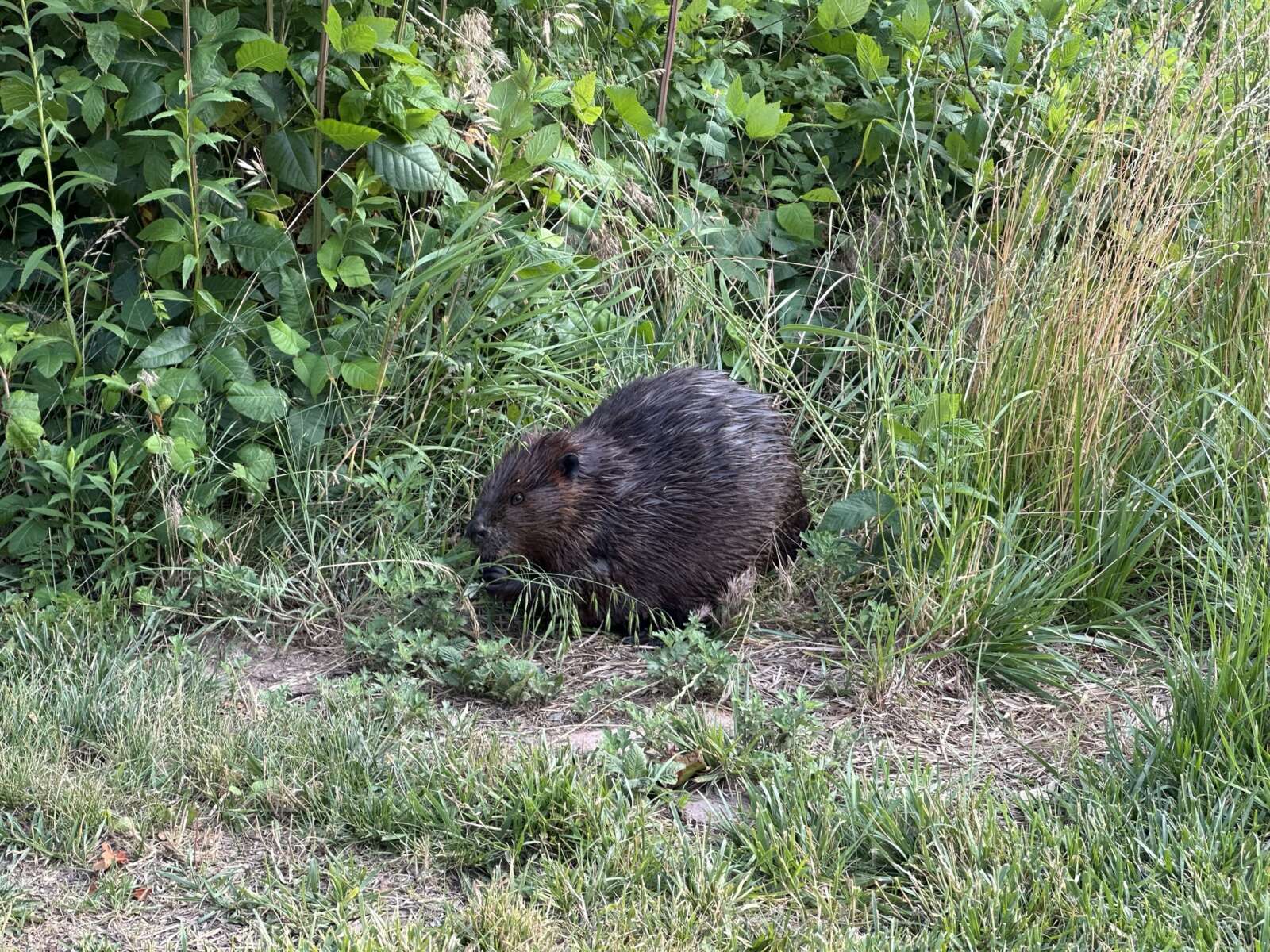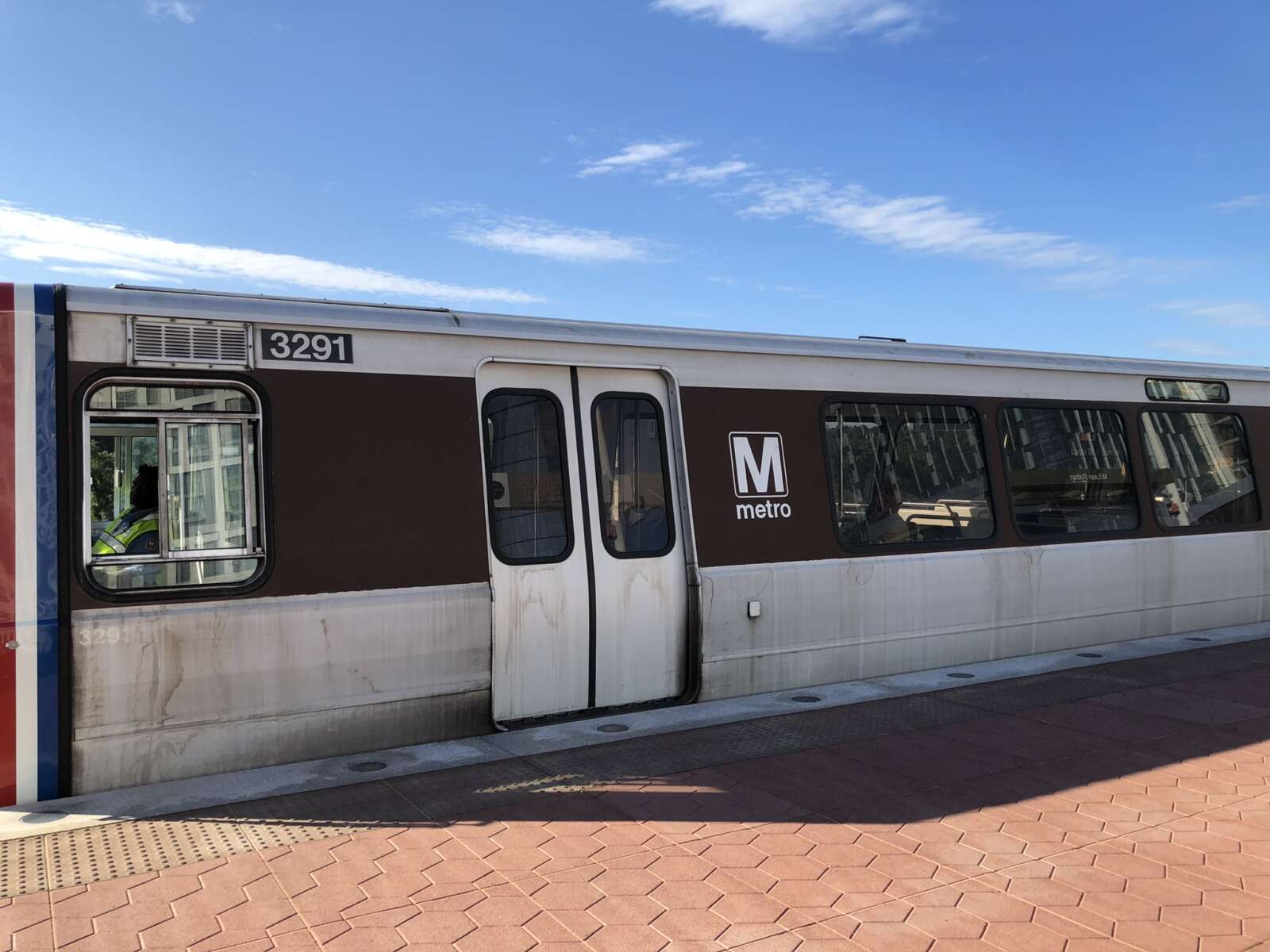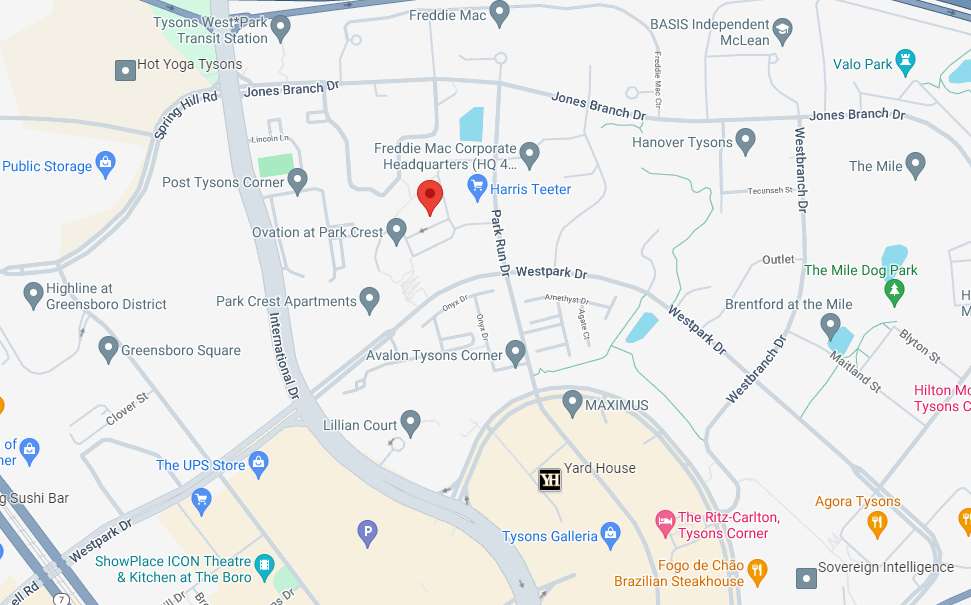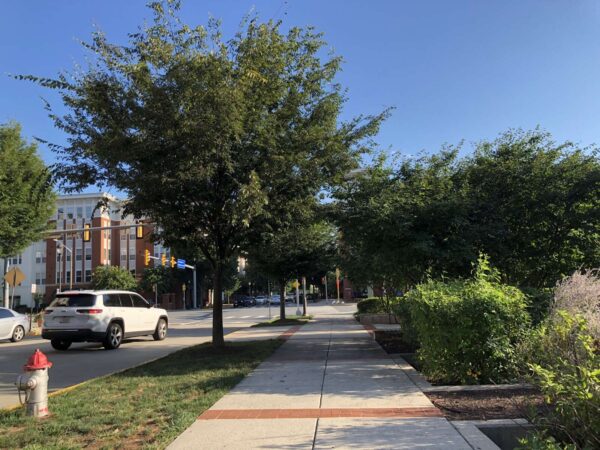
Fairfax County planners want to cultivate more tree-lined streets, but to make that a reality, some more leeway for developers may be needed.
With a proposed pilot program, the county’s Department of Planning and Development (DPD) will let developers in more urbanized areas count street trees as part of their 10-year tree canopy requirements — an option already offered in Tysons.
Credits would be awarded in tiered rates designed to encourage high-quality trees, while recognizing that some sites can’t meet the county’s existing standards, staff told the Fairfax County Planning Commission’s environmental committee last Thursday (Oct. 6).
If approved, the pilot will involve Tysons; transit station areas in Reston, Herndon, West Falls Church, Springfield and Huntington; and the county’s community revitalization districts in McLean, Lake Anne, Annandale, Bailey’s Crossroads, Lincolnia, Merrifield, Springfield and Richmond Highway.
“Street trees have a lot of requirements for soil volume, for underdrains, for watering, and so, fundamentally, they’re very expensive to install,” JoAnne Fiebe, who manages the county’s revitalization program, said. “We count them as some of the most important trees that we can plant, particularly in areas that are urbanizing, yet we currently don’t give them credit in most areas.”
According to Fiebe, Fairfax County’s “treeless areas” like Annandale and the southern Route 1 corridor tend to more urban, hotter and home to its lowest income residents, raising equity issues.
Trees can also provide a critical buffer between streets and sidewalks. To illustrate the safety issues that come without that buffer, Fiebe showed an image of Maple Avenue in Annandale, where a driver hit four pedestrians, including a DPD employee, and killed one of them in May.
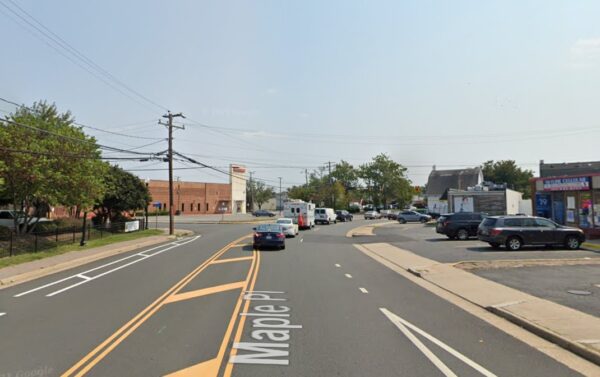
“I’m not saying that street trees would’ve prevented that incident, but they create this visual friction as you’re driving that just encourages you to look around you and slow down,” she said. “I can’t help but think that if we had designed this road differently, we would’ve had a different outcome.”
The county’s public facilities manual generally requires tree planting areas to be at least 8 feet wide and over 4 feet away from any “restrictive barrier.” At least 700 cubic feet of soil must be provided, with about 500 cubic feet added for each additional tree in the pit.
Under the proposed tiered system, developers would get 1.5 credits toward their tree canopy coverage if they meet all of the requirements and a full credit if they at least meet the soil standards.
The pilot would give developers partial credit for street trees if the planting area is at least 5 feet wide, 17.5 feet long and 3.5 feet deep with 300 cubic feet of soil provided per tree. They would also have to maintain and replace the trees “in perpetuity.”
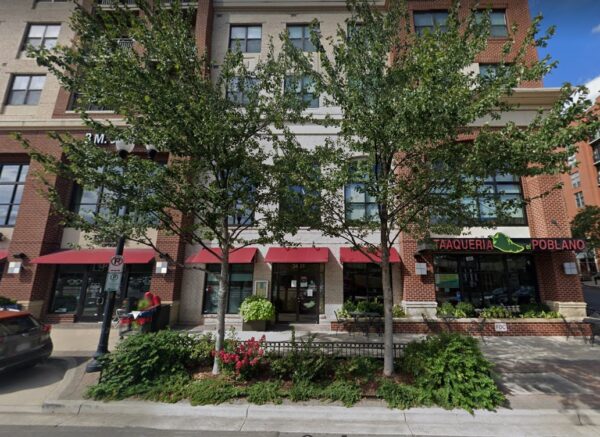
The proposed standard would allow trees in spots where they otherwise won’t fit due to limited space, utilities and other constraints, Fairfax County Urban Forestry Management Director Brian Keightley said.
“Right now, we see a lot of trees in these smaller spaces,” he explained. “…This would allow those smaller spaces, one, to become bigger, two, for us to kind of guarantee good quality soil is installed, and three, we have significantly more influence on the long-term stability of the tree.”
While staff said the tiered system would incentivize developers to meet the county’s full requirements, Fiebe acknowledged that the Tree Commission and other environmental advocates worry that the lower standard will become the default, a concern shared by the planning commission.
“I’ve just found that [developers are] going to default to the smaller trees,” Franconia District Commissioner Dan Lagana said. “I know they’re going to do that. And we lose the benefit of the deep root systems that we’re in really short supply of right now.”
Commission was generally supportive, but had concerns that we may wind up with more lower quality trees as opposed to oaks and other natives that give lots shade, cool their surroundings, and absorb rain water w/strong root systems.
— Dan Lagana (@Dan_Lagana) October 7, 2022
According to Keightley, the alternative standard would still surpass what’s required by neighboring localities like Arlington County, where street tree pits are typically 12 feet long and 5 feet wide.
A former Arlington employee, Keightley pointed to trees along Columbia Pike outside the Penrose Apartments as an example of what would be acceptable under the new standard. However, DPD wants to avoid isolated trees in small, shallow pits like what can be seen on Wilson Blvd in Ballston.
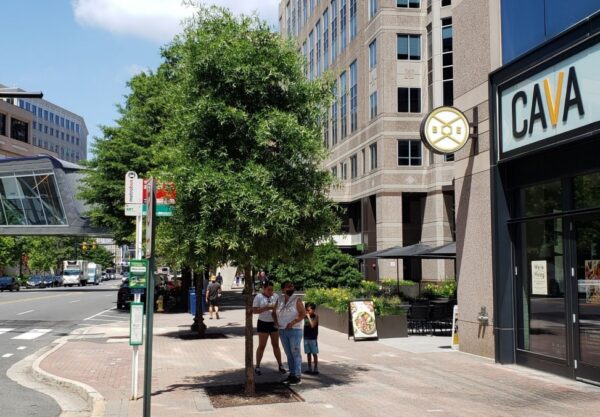
Fiebe said criteria for when the partial credit option can be used will be specified in an amendment to the county’s urban design guidelines. They anticipate presenting the amendment to the Board of Supervisors on Dec. 6.
Mason District Commissioner Julie Strandlie, whose district includes Annandale, asked how more street trees could be added without having to wait on developers.
Fiebe said the county should ensure street trees are provided with transportation projects when feasible, and the revitalization districts have maintenance programs that could monitor the trees. However, to do more than one-off plantings, the county needs a full street tree program like in Arlington.
“Unless we have a true program that looks at both installation and maintenance, we’re going to be reliant on the development community,” Fiebe said. “But [for] those capital projects, we should have a policy that they get included anywhere possible.”
Maple Avenue image via Google Maps


